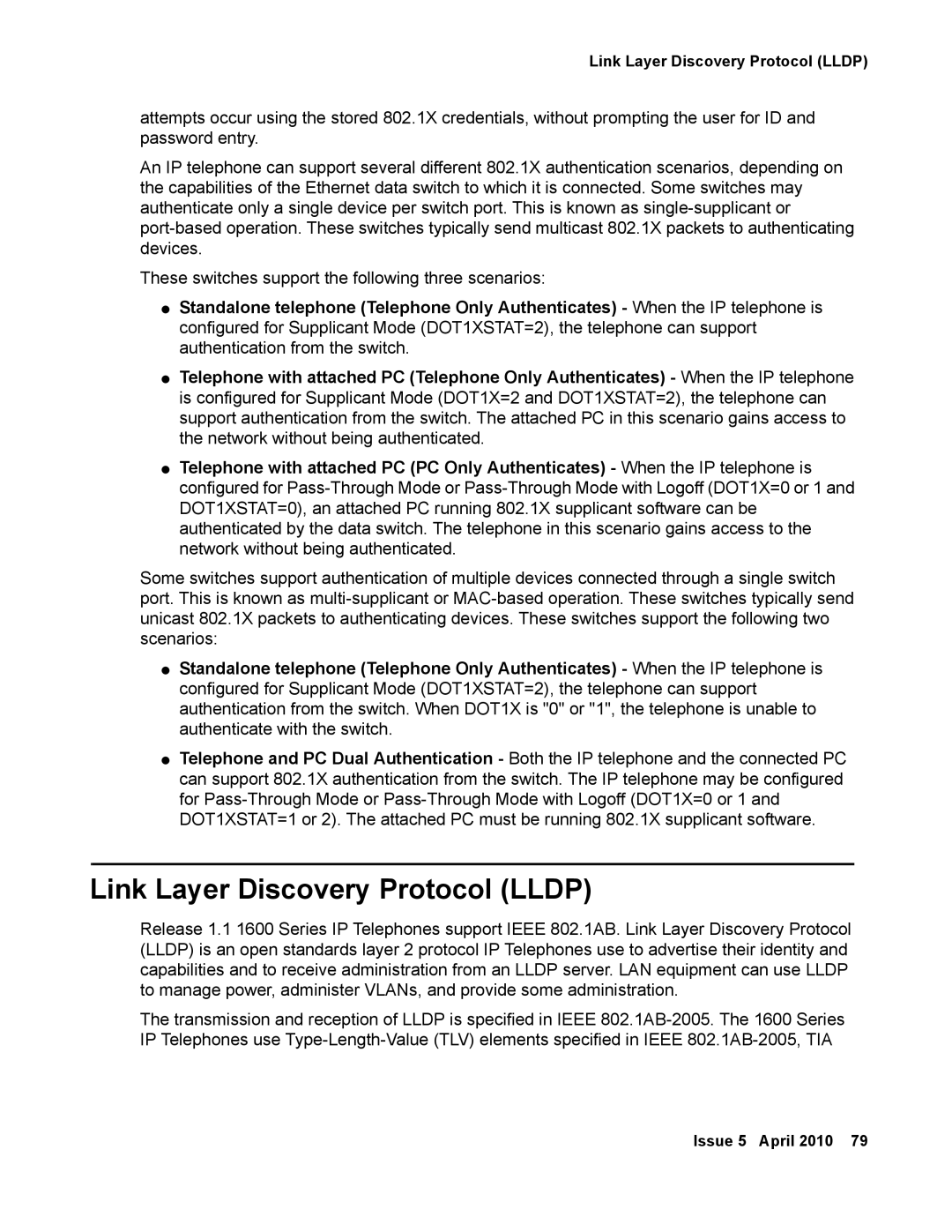Link Layer Discovery Protocol (LLDP)
attempts occur using the stored 802.1X credentials, without prompting the user for ID and password entry.
An IP telephone can support several different 802.1X authentication scenarios, depending on the capabilities of the Ethernet data switch to which it is connected. Some switches may authenticate only a single device per switch port. This is known as
These switches support the following three scenarios:
●Standalone telephone (Telephone Only Authenticates) - When the IP telephone is configured for Supplicant Mode (DOT1XSTAT=2), the telephone can support authentication from the switch.
●Telephone with attached PC (Telephone Only Authenticates) - When the IP telephone is configured for Supplicant Mode (DOT1X=2 and DOT1XSTAT=2), the telephone can support authentication from the switch. The attached PC in this scenario gains access to the network without being authenticated.
●Telephone with attached PC (PC Only Authenticates) - When the IP telephone is configured for
Some switches support authentication of multiple devices connected through a single switch port. This is known as
●Standalone telephone (Telephone Only Authenticates) - When the IP telephone is configured for Supplicant Mode (DOT1XSTAT=2), the telephone can support authentication from the switch. When DOT1X is "0" or "1", the telephone is unable to authenticate with the switch.
●Telephone and PC Dual Authentication - Both the IP telephone and the connected PC can support 802.1X authentication from the switch. The IP telephone may be configured for
Link Layer Discovery Protocol (LLDP)
Release 1.1 1600 Series IP Telephones support IEEE 802.1AB. Link Layer Discovery Protocol (LLDP) is an open standards layer 2 protocol IP Telephones use to advertise their identity and capabilities and to receive administration from an LLDP server. LAN equipment can use LLDP to manage power, administer VLANs, and provide some administration.
The transmission and reception of LLDP is specified in IEEE
Issue 5 April 2010 79
